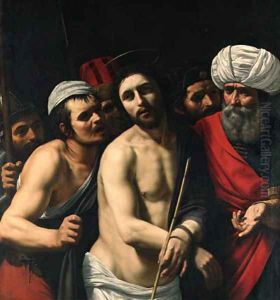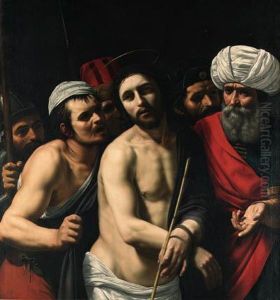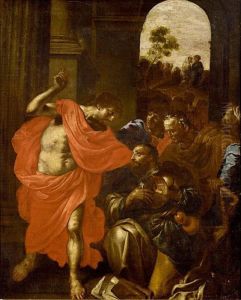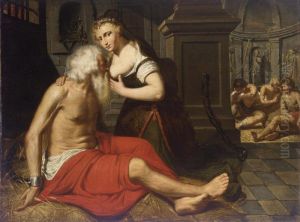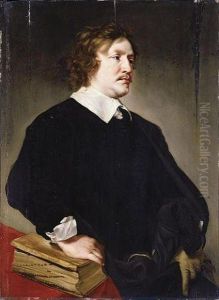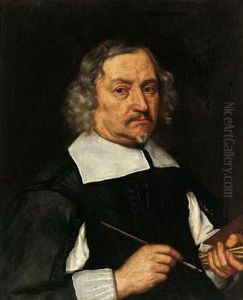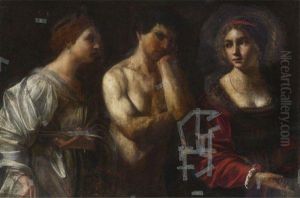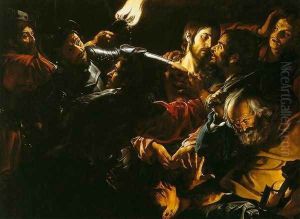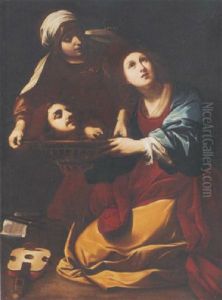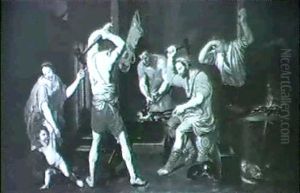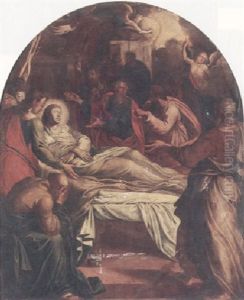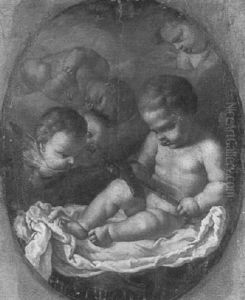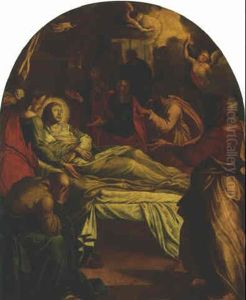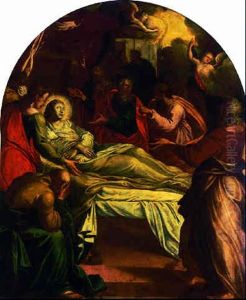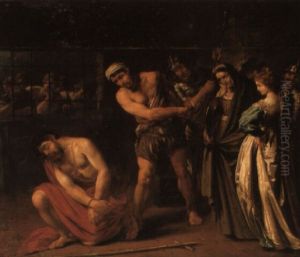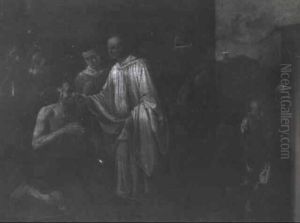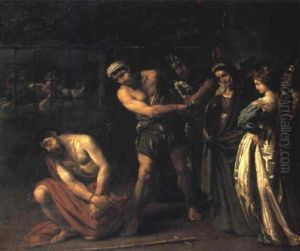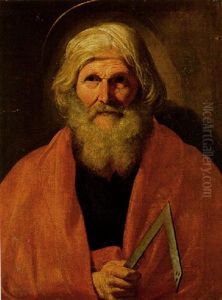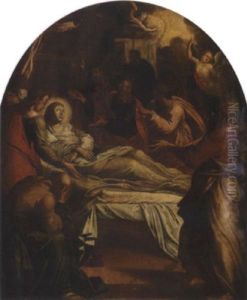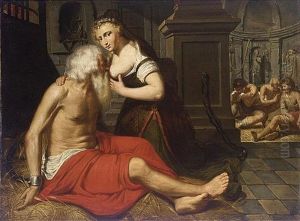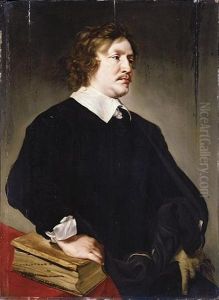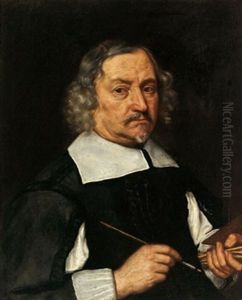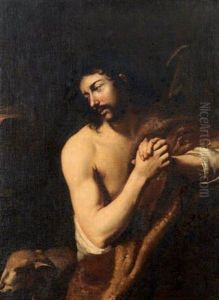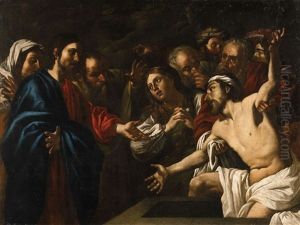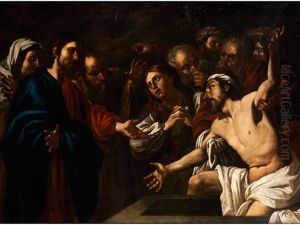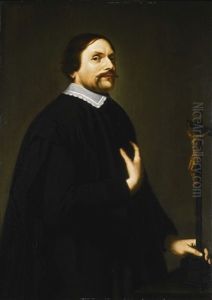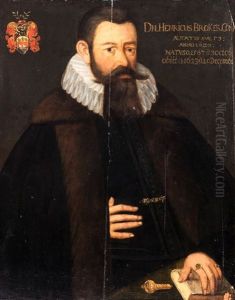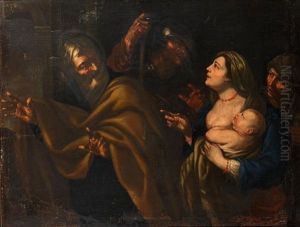Gerard Douffet Paintings
Gerard Douffet, also known as Gérard Douffet or Gérard Duffet, was a Flemish Baroque painter, born in Liege (now in Belgium) in 1594. Douffet is often associated with the Caravaggisti, artists who were influenced by the revolutionary style of the Italian master Caravaggio, known for his dramatic use of light and shadow, as well as his focus on naturalism and the emotional intensity of his subjects.
Douffet received his initial training in his hometown before traveling to Italy around 1616, where he was deeply influenced by the works of Caravaggio. He was particularly drawn to Caravaggio's chiaroscuro technique, which he adapted to his own compositions upon his return to Liege. After spending several years in Rome, Douffet returned to Liege in the 1620s, and his mature works show a successful blend of Italian influences with the northern European painting tradition.
In Liege, Douffet became a successful painter, receiving commissions from churches and the local elite. His works often featured religious subjects, portrayed with a strong sense of drama and emotional intensity. He was also known for his portraits, which conveyed the character and status of his sitters with a similar intensity. Despite his success, Douffet never established a large workshop, which limited his output and may be one reason why he is not as widely known today as some of his contemporaries.
Douffet's work is characterized by a meticulous attention to detail, a rich color palette, and the dramatic interplay of light and shadow. These elements combined to create a sense of depth and volume in his paintings, which enhanced their emotional impact. Among his notable works are 'The Martyrdom of Saint Andrew' and 'The Ecstasy of Saint Francis', both of which exemplify his skill in depicting religious fervor and the human form.
Gerard Douffet continued to work and live in Liege until his death in 1660. His contribution to the Flemish Baroque, particularly in terms of his adaptation of Caravaggesque light effects, makes him a significant figure in the artistic heritage of the Southern Netherlands (present-day Belgium). Today, Douffet's works can be found in various museums and collections, where they continue to be studied and admired for their emotional power and technical mastery.
